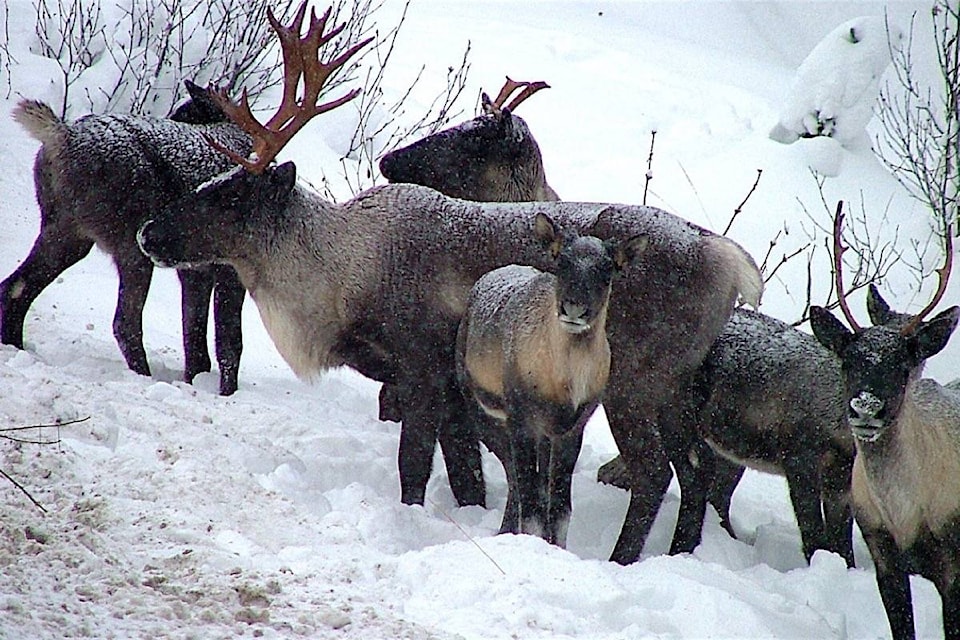The B.C. NDP government has imposed a two-year moratorium on new mining and forest work in large areas of forest land in northern B.C., after a bumbling effort to shut down existing industry and comply with a federal order to protect endangered caribou herds.

It’s a cruelly mistimed blow to B.C.’s struggling forest industry, and has implications for caribou zones down the Rocky Mountains to the Kootenays. The federal Liberals want to impress their urban environmentalist supporters going into a fall election, and Premier John Horgan appears to be trying to use the caribou crisis to further his aggressive transfer of provincial timber to Indigenous communities.
The initial B.C. proposal, worked out in secret with two selected Indigenous groups, created such a wave of public concern that Horgan put it on hold this spring and called on former B.C. Liberal cabinet minister Blair Lekstrom to advise his forests minister, Doug Donaldson.
Lekstrom’s report details how local governments, other Indigenous groups and industry were shut out of private talks with the West Moberly and Saulteau First Nations. Their chiefs falsely claimed the sweeping restrictions would not eliminate forest jobs, and Horgan intervened after forest-dependent people started packing meetings in the Peace and Kootenay regions to demand answers.
RELATED: Residents pack caribou meeting in Williams Lake
RELATED: Caribou protection plan halted as B.C. mends fences
The struggle to protect dwindling caribou herds has been going on for many years, and B.C. is part of a much larger picture. Newfoundland’s herds are many times bigger than B.C.’s total population, and decline there as well as here is attributed to climate shifts, resurgence of wolves and grizzly bears and their access to prey via roads and snowmobile tracks.
In B.C., professional environmentalists are as usual the loudest voices. They’re appalled that the province has resorted to shooting wolves from helicopters, dismissing the temporary moratorium as too little and too late.
Claims that successive B.C. governments have “done nothing” may be good for fundraising, but they are false. By 2016, the area protected from logging and road building in the South Selkirks was 2.2 million hectares, 95 per cent of the best caribou habitat. The South Peace recovery plan covered 400,000 hectares of high-elevation winter habitat.
The same winter, the forests ministry worked with West Moberly and Saulteau to try to shoot 120 or more wolves in the South Peace, where the Graham herd, B.C.’s largest, numbered about 700 caribou.
The fifth winter of wolf kills has now past, and oddly the NDP-Green government hasn’t been criticized for continuing it. Say what you want about these provincial efforts, but they’re not nothing. Predator control and maternity pens to protect tiny calves are the only strategies that have been shown to work, and these costly efforts are continuing.
Banning industrial activity and roadbuilding is also not a magic solution. As the Council of Forest Industries has pointed out, Wells Grey Provincial Park and Jasper National Park herds are also declining, with no industrial activity. Caribou are gone from Banff National Park, which has been protected since 1885.
In the meantime, the Justin Trudeau government has just discovered another endangered species it wants to be seen trying to save. The federal agency wrote to B.C. in June, urging work to start on a plan for the “threatened” grizzly bear, one of the caribou’s main natural predators.
Folks living in northern B.C. report that the main threat involving grizzlies these days is that there are too many of them, and they’re coming closer to communities.
Tom Fletcher is B.C. legislature reporter and columnist for Black Press Media. Email: tfletcher@blackpress.ca
@tomfletcherbc
tfletcher@blackpress.ca
Like us on Facebook and follow us on Twitter.



